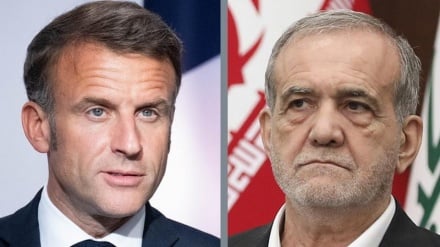How the U.S., the E3 killed the Cairo Agreement?
-

Seyyed Abbas Araghchi, Iran’s Foreign Minister; Badr Abdelatty, Egypt’s Foreign Minister; and Rafael Grossi, Director General of the IAEA
Pars Today — Iran’s foreign minister wrote on his X account that the “Cairo Agreement” has been killed by the United States and the three European countries.
According to Pars Today, Foreign Minister Seyyed Abbas Araghchi wrote on his X account: Just as diplomacy was attacked in June by Israel and the United States, the “Cairo Agreement” has now also been killed by the U.S. and the three European states.
He explained the troubling and shameful process that brought matters to this point:
When Iran was on the brink of entering the sixth round of nuclear negotiations with the United States, Israel — and then the U.S. — suddenly attacked Iran. Later, despite the bombing of its nuclear facilities, Iran, through Egyptian mediation, signed an agreement with the International Atomic Energy Agency (IAEA) in Cairo to resume inspections. But under U.S. pressure, the three European countries moved to impose UN Security Council sanctions against the Iranian people. When Iran began providing access for IAEA inspectors to its nuclear facilities — starting with sites that were not bombed in the June and July attacks — the U.S. and the three European countries coordinated to push for Iran’s censure at the IAEA Board of Governors. It is now clear to everyone: Iran is not the party seeking to create a new crisis. Our goodwill is not being recognized. The three European countries and the U.S. are pursuing escalation, and they know full well that the formal collapse of the Cairo Agreement is the direct result of their own provocations.
The foreign minister’s emphasis that the Cairo Agreement was destroyed by the U.S. and the so-called European Troika (Germany, France, and the United Kingdom) reveals a bitter truth: the real purpose behind the West’s recent engagement with Iran — from indirect U.S.–Iran talks to the signing of the Cairo Agreement — was not to resolve Iran’s nuclear issue peacefully. Rather, it was first to employ deception, and then to pressure Iran into allowing IAEA inspectors to precisely assess the extent of the damage inflicted on Iranian nuclear facilities.
Even though the Cairo Agreement was reached after joint Israeli–U.S. attacks on Iran — with the stated aim of granting IAEA inspectors access to Iranian nuclear sites that had not been bombed in the June 2025 strikes — the United States and the three European countries continued to escalate pressure on Tehran. By jointly presenting a draft resolution at the latest IAEA Board of Governors meeting, they paved the way for Iran’s condemnation.
The “Cairo Agreement” was formed after the Israeli and American attacks on Iran’s nuclear facilities, through Egypt’s mediation and Iran’s cooperation with the IAEA. Its primary purpose was to restart inspections and rebuild mutual trust so that nuclear negotiations could resume. But the United States and the three European states, through political pressure, new sanctions, and an atmosphere of mistrust, effectively disabled the Cairo Agreement and prevented its objectives from being met.
The stages and methods used by the U.S. and the European Troika to undermine the agreement
1-Initial attack on diplomacy:Before the sixth round of negotiations began, Israel — and then the United States — attacked Iran, destabilizing the diplomatic environment and sowing distrust.
2-European alignment:After the Cairo Agreement was signed, the three European countries (Germany, France, and Britain), instead of offering genuine support, pursued Security Council sanctions against Iran by attempting to trigger the “snapback” mechanism under U.S. pressure.
3-Ignoring implementation efforts:While Iran began facilitating access for IAEA inspectors, the U.S. and Europe introduced new political and sanctions-related initiatives that effectively neutralized the agreement.
4-Creating an atmosphere of distrust:Although inspections were to begin at sites unaffected by the bombings, the U.S. and Europe simultaneously accused Iran of lacking transparency. This contradiction weakened the agreement from within.
5-Blocking the diplomatic pathway:Ultimately, continued pressure and sanctions rendered the Cairo Agreement nonfunctional — or in the foreign minister’s words, “killed,” meaning it could no longer survive or be implemented.
Consequences of the U.S. and European Troika’s actions
- Growing distrust:Iran concluded that even when it cooperates and signs an agreement, Western parties do not honor their commitments — undermining trust in future negotiations.
- Heightened tensions:The collapse of the Cairo Agreement pushed regional and international dynamics back toward confrontation and crisis.
- Weakening of the IAEA:The IAEA, which was supposed to serve as a pillar of confidence-building, lost credibility under U.S. and European political pressure.
- A Lost diplomatic opportunity:The Cairo Agreement could have opened the door to reduced tensions and a return to negotiations. But Western obstructionism shut down this opening, increasing the risk of further conflict.
In the end, through political pressure, new sanctions, media manipulation, and disregard for the implementation process, the United States and the three European countries effectively dismantled the Cairo Agreement. This not only destroyed a significant diplomatic achievement but also produced widespread consequences for trust, regional stability, and the future of nuclear negotiations.


